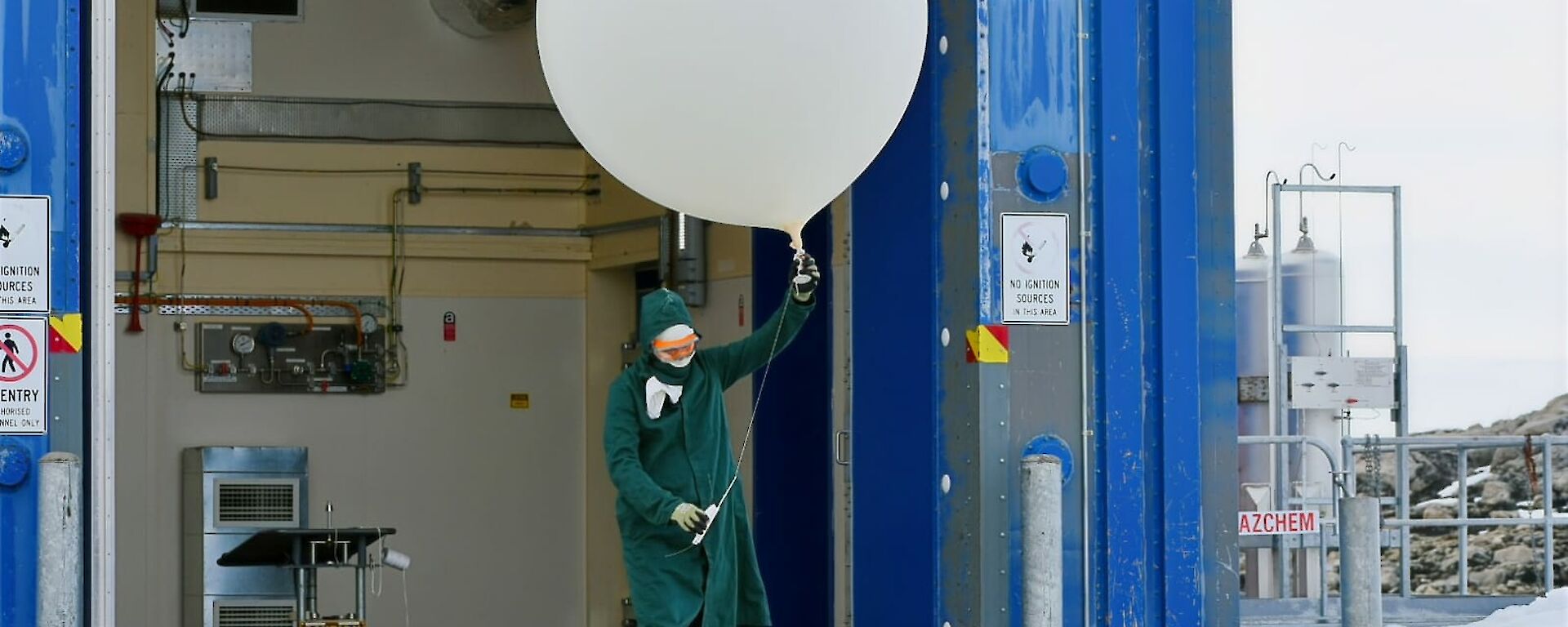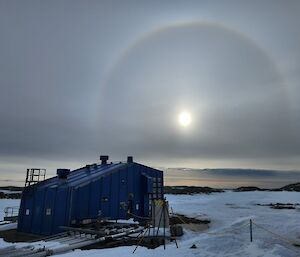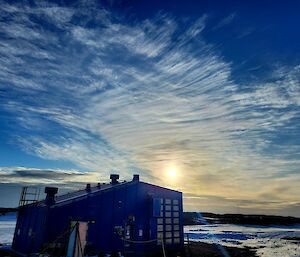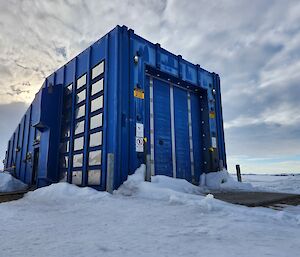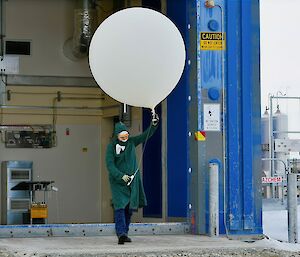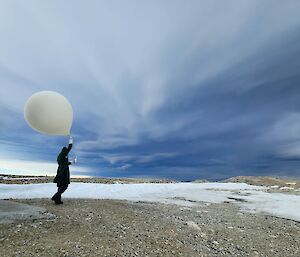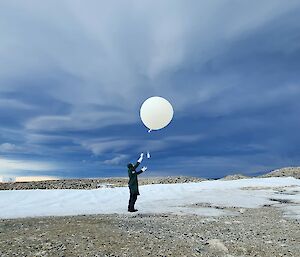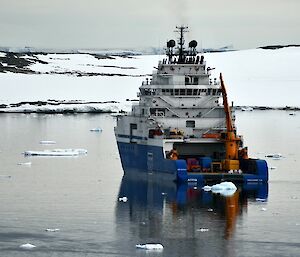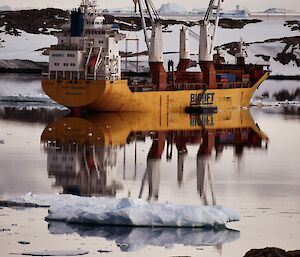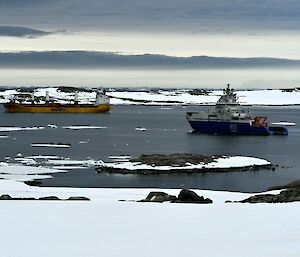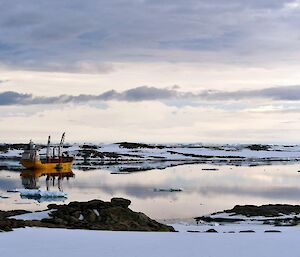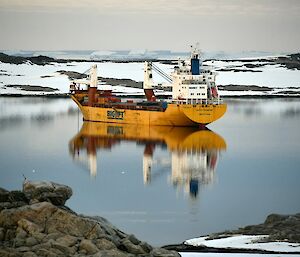Imagine the sheer number and variety of items a big village needs in a year. Then imagine a self-contained, big village with its own fire and emergency response teams, trades workshops, medical centre and waste management facilities. Then imagine the village has a particular purpose - research support - and that it’s in a very particular environment - Antarctica - and you may be building an idea of the resources needed to support it.
On Wednesday this week we finished the sterling effort that was the Casey annual refuel and resupply – 1.05 million litres of fuel pumped, and 1,286,927 kg of cargo unloaded from ship to shore, plus 455,558 kg of cargo backloaded to be returned to Australia. Every item you can think of and many you might never imagine has been handled by our hard working cargo and support teams, from a precious magnetometer to tile grout, a medical centrifuge to an entire frozen pig. Notably, we’ve taken delivery of the new Traverse Medical Facility, a modified container-on-sleds specially designed to support the deep-field Million Year Ice Core (MYIC) Project. This is looking good for 2024 after our trail blazing MYIC 2023 traverse team reached the project site eight days ago. The heaviest items brought ashore were two new bulldozers and an excavator, which weighed around 30,000 kg each. At the other end of the weight scale was saffron, paper party streamers and sachets of bowel prep (thank you, Dr Jan, for that insight. I think).
Amongst the plentiful cargo received here at the Casey Meteorological Office we have a new visibility meter, a year’s supply of sample flasks for the air quality research support we undertake for CSIRO, and 750 weather balloons. Casey Met Office is part of the Global Upper Air Network (GUAN), a system of 170 meteorological observing stations around the world which take regular ‘soundings’ (measurements) of the upper atmosphere, collecting data such as temperature, humidity, wind speed and wind direction. To do this, every 12 hours we launch a weather balloon which carries aloft a radiosonde, a small instrument that collects the data. The GUAN has high standards, requiring the soundings of member stations to consistently reach a minimum pressure level of 30 hectopascals, which is variable but about 77,000-79,000 feet at Casey at this time of year. We undertake quality control for each flight which entails recording launch conditions, ensuring that the sonde returns consistent and meaningful data and monitoring height reached (at the moment, most of our flights reach about 120,000 feet). The balloons need to be filled with a gas which is lighter than air and can be made here (we’re not quite on a gas cylinder delivery route). So we use hydrogen, which is very functional but needs a bit of care to work with. PPE has never been so fashionable!
The data from upper atmosphere soundings is incredibly valuable, from the moment the balloon is launched to decades later. A recent sounding supports accurate meteorological observations and forecasts, giving (amongst other things) a snapshot of the upper winds, and allowing likely cloud heights and thicknesses to be assessed. GUAN data is also needed to ‘truth’ global weather prediction models. It gives the models an accurate starting point, and the model predictions can be compared against soundings over the subsequent 24-48 hours, assisting forecasters to assess how well the models are performing. Long-term, the soundings contribute to the climate record, which is important in itself but is also used by many researchers in disciplines such as glaciology and atmospheric sciences as a point against which to reference their data.
What do I love about this? Amongst many other things, knowing that the radiosonde data we collect and the surface observations we also make are contributing to a really critical body of knowledge. It is doubly precious here because of the relatively low number of met observations stations in the southern hemisphere, particularly in Antarctica. I also love the mix of old and new - there still isn’t a better way to securely attach a modern biodegradable balloon to a high-tech sonde than to have a human tie it on with string, and no better way to get the balloon aloft than to have a human launch it.
I’ve felt privileged to be part of the work that we’ve been doing at Casey to sustain ourselves for another year, surrounded by so many dedicated, knowledgeable and incredibly hard working people. Hauling recalcitrant ice floes away from the fuel line in the freezing small hours of the morning was a labour of love but strangely satisfying. And being on an unpacking team when all the coffee and chocolate was delivered - just coincidence….
- Clare Ainsworth, BoM Observer - Casey station

